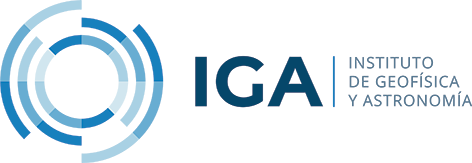- Inicio
- Acerca de la Revista
- Noticias
- Normas de Publicación
- Políticas
- Acusaciones de mala conducta
- Autoria y contribución
- Aviso de derecho de autor/a
- Código de conducta y buenas practicas
- Conflictos de interés
- Datos y su reproducibilidad
- Política de acceso abierto
- Política de corrección, retirada, retractación y eliminación de artículos
- Política de detección de plagio
- Política de revisión
- Política para el uso de lenguaje inclusivo
- Política de uso de IA
- Comite Editorial
Instituto de Geofísica y Astronomía CUBA
Artículo 6.
(pág. 11)
INTERPRETACIÓN GEÓLOGO-GEOMORFOLÓGICA DEL ESTUARIO DEL RIO GUAJAIBÓN MEDIANTE IMÁGENES SATELITALES
Naima Rojo-Marrero y Mario Guerra-Oliva
Instituto de Geofísica y Astronomía. Email: naima@iga.cu y mguerra@iga.cu
Resumen
Mediante la interpretación de la imagen satelital y la comprobación de los recorridos de campo y la cartografía conjunta de las caracterizaciones geológicas y geomorfológicas se logró conocer las condiciones de las estructuras geológicas y de las formas del relieve del estuario del río Guajaibón. El sustrato geológico está constituido por la formación Jaimanitas referida a Pleistoceno Superior (parte baja), el relieve de esta formación está formado por extensas capas de lapies libres y cubiertos distribuidos, los primeros más próximos al valle del río y los segundos más alejados hacia el extremo del estuario. La neotectónica es muy débil, variando desde los 3 m hasta solo 0, 50 m con una velocidad neotectónica calculada de 0,0005 m/año, y con una red de grietas que tabica el área en tres zonas bien reconocibles en el relieve de los escarpes costeros. Todas estas características fueron interpretadas en la imagen y comprobadas mediante la cartografía de campo. El relieve está constituido en la parte inferior por las llanuras bajas, siendo estas de origen cársico, corrosivas erosivas cársicas y de erosión marina. Además, se observa el valle submarino del pretérito Guajaibón en la imagen satelital, el cual se pudo cartografiar durante el trabajo de campo. Finalmente se llegó a la conclusión de que el estuario es de origen erosivo tectónico.
Geological-geomorphological interpretation of the Guajaibón river estuary using satellite images
Abstract
Through the interpretation of the satellite image and the verification of the field trips and the joint cartography of the geological and geomorphological characterizations, it was possible to know the conditions of the geological structures and the relief forms of the Guajaibón River estuary. The geological substratum is made up of the Jaimanitas formation referred to as the Upper Pleistocene (lower part), the relief of this formation is formed by extensive layers of free and covered lapies distributed, the first ones closest to the river valley and the second ones further away towards the end of the estuary. The neotectonic is very weak, varying from 3 m to only 0.50 m with a calculated neotectonic speed of 0.0005 m/year, and with a network of cracks that partition the area into three well-recognizable zones in the relief of the coastal escarpments. All these features were interpreted in the image and verified by field mapping. The relief is constituted in the lower part by the low plains, these being of karst origin, corrosive erosive karst and marine erosion. In addition, the underwater valley of the past Guajaibón is observed in the satellite image, which could be mapped during the field work. Finally, it was concluded that the estuary is of tectonic erosional origin.

